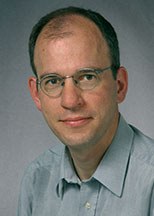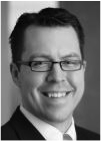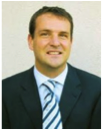

Thursday August 8, 16:15–17:45
The panel will explore the practical deployment of quantum key distribution, including the questions:

Norbert Lütkenhaus studied at the RWTH Aachen and the LMU Munich, from which he graduated with a thesis in general relativity. Then he changed fields to study quantum optics and quantum cryptography under the supervision of Stephen M. Barnett at the University of Strathclyde, Scotland, UK. In 1996 he obtained his PhD. After postdoc positions in Innsbruck (Peter Zoller and Ignacio Cirac) and the Helsinki Institute of Physics (Kalle-Antti Suominen) he worked for MagiQ Technologies (New York) to initiate the project of commercial realisation of quantum key distribution. Returning to academia in 2001, he built up and lead an Emmy-Noether Research Group at the University of Erlangen-Nürnberg, during which time he did his habiliation (2004). Currently he is a Professor in the Physics Department at the University of Waterloo and a member of the Institute of Quantum Computing.

Michael K. Brown leads both the Security Product Management and the Security Research and Assessment teams at BlackBerry. Mike’s product management team is responsible for understanding market requirements for security across all BlackBerry product lines, and overseeing specialty security products such as the S/MIME solution for BlackBerry and the BlackBerry Smart Card Reader. Mike’s research and assessment team is responsible for understanding technical threats to the BlackBerry platform, guiding the secure design and implementation of BlackBerry products, and researching new defensive countermeasures. Mike joined BlackBerry as a software developer and was responsible for the development of the S/MIME Support Package for BlackBerry. Mike holds a Master’s degree in mathematics, with a focus on cryptography, from the University of Waterloo.

Professor Nicolas Gisin was born in Geneva, Switzerland, in 1952. After a master in physics and a degree in mathematics, he received his Ph.D. degree in Physics from the University of Geneva in 1981 for his dissertation in quantum and statistical physics. The “Fondation Louis de Broglie” recognised this work with an award. After a post-doc at the University of Rochester, NY, he joined a start-up company, Alphatronix, dedicated to fiber instrumentation for the telecommunication industry. Initially head of the software, he quickly became responsible for the hardware-software interface. Four years later he joined a Swiss software company developing an image processing package which received the attention of the American journal “PC Magazine”. In 1988 an opportunity to join the Group of Applied Physics at the University of Geneva as head of the optics section brought him back to the academic life. At the time the optics section was entirely devoted to support of the Swiss PTT (now Swisscom). In order to get a critical mass and stability, the optics section under the impulse of Prof. N. Gisin started two new research directions, one in optical sensors, one in quantum optics. The telecom and the sensing activities led to many patents and technological transfers to Swiss and international industries. Several products had and still have a commercial success. The quantum optics activities are more basic research oriented. The main theme is to combine the large expertise of the group in optical fibers with basic quantum effects. More recently, the demonstration of quantum cryptography and of long distance quantum entanglement received quite a lot of attention as well from the international scientific community as from the press “grand public”.

Richard Hughes is a Laboratory Fellow at the Los Alamos National Lab. He is co-principal investigator of projects in both free-space and optical fiber based quantum key distribution and holds two US patents in these areas. He obtained his doctorate from the University of Liverpool and has held positions at Oxford University, Queens College Oxford, Caltech, CERN, and the University of Oslo. His awards include the Los Alamos Distinguished Performance Award, Los Alamos Fellow’s Prize, co-winner of an R&D Development 100 Award for “Free Space Quantum Cryptography,” and co-winner of the European Union’s Descartes Prize. He is an APS Fellow and has authored more than 150 scientific papers.

Mark Pecen serves as Sr. Vice President, R&D for BlackBerry, and is responsible for RIM’s Advanced Technology Research Centre and broad-based R&D strategy, and also serves as an advisor to the RIM Innovation Council of the board of directors. Pecen established RIM’s Research Centre in 2005. The centre’s focus is wireless communication research, including all aspects from radio frequency hardware and antennas to core network technology and wireless-specific services. Topics include signal processing, information theory, cryptography, audio/video codecs, data compression, radio system protocols, mobility control, electromagnetics, advanced services and application platforms, prototyping of hardware and software and new technology trials. He is an inventor of a number of technologies adopted by global standards bodies, including the Global System for Mobile Telecommunication (GSM), Universal Mobile Telecommunication System (UMTS), HighSpeed Packet Access (HSPA+), 4th Generation Long-Term Evolution (LTE/LTE-Advanced) and others. A past Distinguished Innovator with Motorola, Pecen also managed consultation work for firms in North America and Europe. Pecen serves as an advisor to the Canadian government on wireless communication and research. He holds board positions on 4G Americas, École Polytechnique, Wilfred Laurier University School of Business, Quantum Works academic network for quantum information research, Canadian Digital Media Network, the Communication Research Centre (CRC) of Industry Canada and others. As a veteran of the wireless industry, he holds more than 100 fundamental patents in areas of mobile communication, networking and computing, and is a graduate of the University of Pennsylvania, Wharton School of Business and the School of Engineering and Applied Sciences.

Mr. Gregoire Ribordy, co-founder and CEO, has over 15 years of experience in various R&D and management roles in the field of optical measurements and communication systems. He founded ID Quantique in 2001 and has managed the company since then. Prior to this, he was a research fellow at the Group of Applied Physics of the University of Geneva between 1997 and 2001. In this position, he actively developed quantum cryptography technology. Between 1995 and 1996, Mr. Ribordy worked for one year in the R&D division of Nikon Corp. in Tokyo. Mr. Ribordy is the recipient of several international awards, and holds patents in the area of quantum cryptography and quantum information technology. Among other things, he co-invented a new quantum cryptography protocol (SARG) and platform (Coherent One-Way).